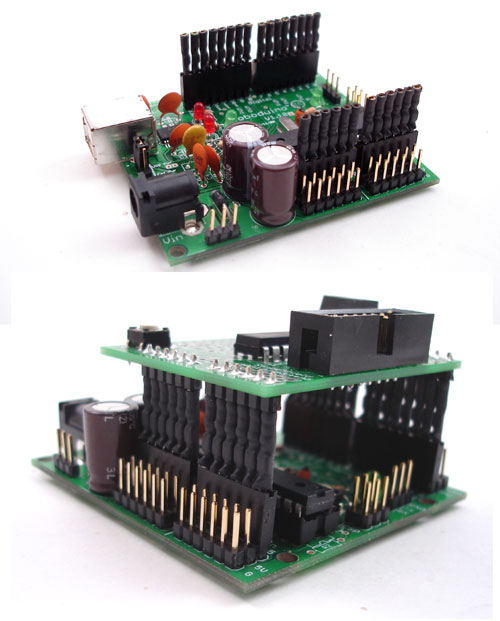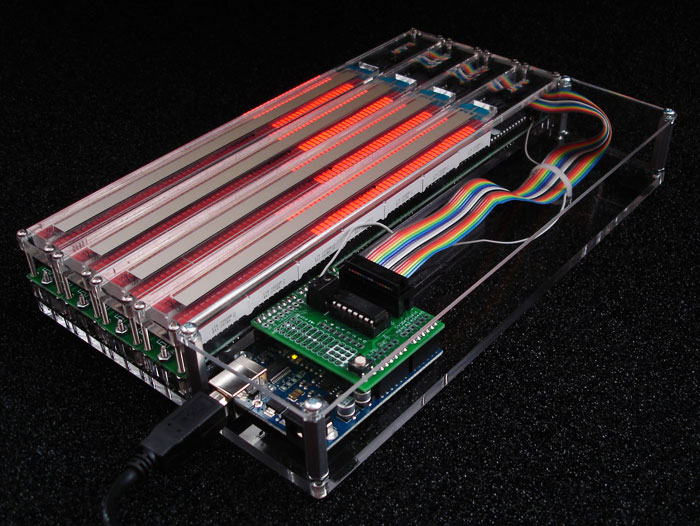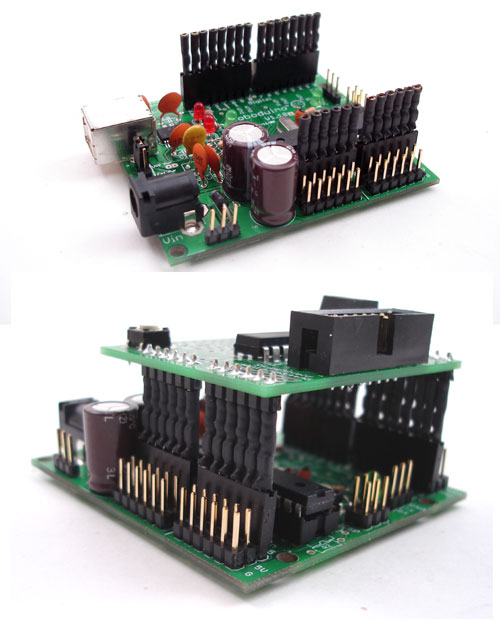Ready-to-play out of the box Stribe Duo and Quad assembled units are now available from thestribe kit page.
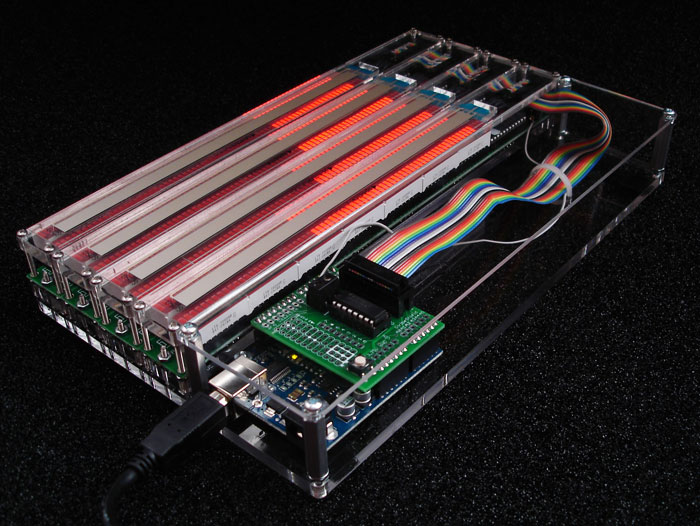
Voice Of Saturn CV Mod using a vactrol
Voice of Saturn Synth with vactrol cv mod from Travis Thatcher on Vimeo. This mod was done using a vactrol, vtl5c3 placed in parallel with the range pot, r10 on the VoS Synth. Its a very easy mod and yields some really great musical results. The first part of the video has a diagram of the mod and an explanation. See the forum if you have any questions. -Travis The Voice of Saturn
Techniques for Finding Shorts in Printed Circuit Boards
After ordering a new pcb and populating all the components, sometimes you’ll find a short between two signals. This can be especially hard to track down if it’s touching a gound or power signal that travels all over the board. Worse yet, sometimes the short is on an internal layer and can’t be seen.
Common Causes:
- A small solder bridge or ball between pins: Sometimes small strands of solder will bridge two pins–this is especially easy to do on “bard bones” boards without any solder mask. Using too much solder paste, or paste that’s past it’s prime, can also lead to bridges or small balls getting lodged behind pins. The balls are especially hard to remove since solder wick usually can’t reach them. Sometimes a thorough flooding of solder followed by more wicking will work.
- Incorrect components / pinouts: Make sure the pinout on that spare voltage regulator you had lying around actually matches the layout connections.
- PCB manufacturing erros: Sometimes you’ll find hair-line connections where they shouldn’t be, especially in areas close to the manufacturer’s limits.
David at uCHobby.com had some good tips for finding shorts in printed circuit boards.
-
- The obvious thing to try is to start removing components and isolate sections of the board. This may also require cutting a few traces.
- If you’ve already taken all the components off, and carefully checked over the board for obvious errors, try running a few amps through the offending traces. If it’s a hairline pcb manufacturing mistake, the small thread of conductor will burn up under the amperage. Your other traces, even ones as small as 8mils, should be fine for a short time under a few amps.
- Lastly, if you’ve narrowed down the short but can’t see it because it’s inside the board, it might be time to drill. David had some horror stories about drilling through 10 layer boards to fix one trace while breaking traces in 7 other layers. Have some “green” or “white” wire handy to jumper the broken traces.
Any other ideas for quickly locating a short without resorting to board surgery or removing all your painstakingly placed parts?
Custom Stribe Duo with Joysticks, Pots
On request, we created a custom Stribe Duo with a joystick and two pots mounted on the side. If you’re interested in similar mods, let us know. We can add things like MIDI ports, VC (voltage control) inputs, etc.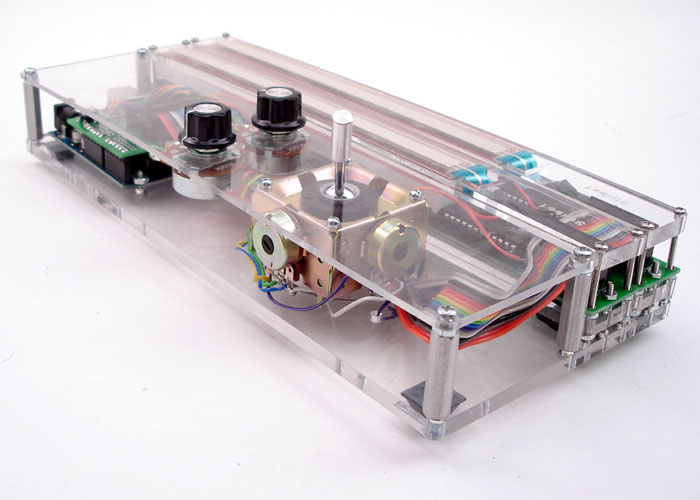
Female-to-Female Headers let Roboduino Accept Shields
One complaint we received about the roboduino is that standard shields couldn’t be plugged in since the roboduino has male pins instead of the female headers found on arduinos. These female-to-female headers now make it possible to easily plug in shields to the roboduino (an arduino-compatible for robotics that makes it easy to plug in servos and battery packs).